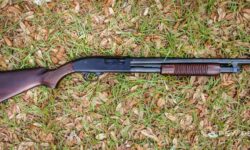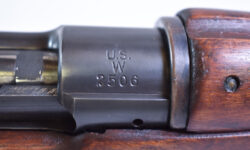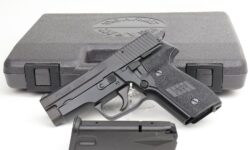What is Steel Core Ammo?
At the training, you may have come across the term “steel core ammo.” So, you must be wondering what is steel core ammo, and why is it important?
When you think about it, it’s simple to understand why lead is the most preferred metal for bullets. Lead is highly thick, allowing it to maintain more momentum after traveling large ranges. In addition, lead is a soft metal that can melt at low temperatures. It implies it’s simple to shape in whatever way you choose.
Lastly, lead is inexpensive. If you’re putting money aside for retirement by hoarding lead ingots, you’d better get a lot of them. It’d be a wonderful start if we can just fill the Astrodome.
Steel core ammo: What is it?
Steel core ammunition has a tiny steel bullet that has been lead-coated on the exterior. The bullet contains a steel core rather than a solid lead core; that’s why it is termed steel “core.” There are a few instances where a bullet will contain steel. Lead core bullets with steel jackets aren’t that rare for a foreign military surplus cartridge, especially from the Soviet Bloc.
Because steel is less expensive than copper, such ammunition is more cost-effective to create; nevertheless, harder steel might be harder on a bore. The huge bullet of the 50 BMG is often made of mild steel with a copper jacket. However, the most typical place to see steel in a bullet is in the 5.56×45 ball M855 cartridge.
M855 Ammo
The M855 cartridge is also called a “penetrator,” a term that gives away a lot about what it’s meant to achieve. Its bullet contains a lead core, a copper jacket, and a 7-grain steel tip, weighing 62 grains in all. It’s simple to see because of the green paint on its tip.
The M855 bullet has a much stronger tip than the M193, making it easier to pierce soft steel targets. The M855 can assist in balancing the odds if your target is protected by a vehicle door, helmet, or other armor.
M855 vs. M193 Ammo
The M855 bullet is less likely to shatter than the standard M193, which does not have a steel tip. As a result, it is thought to be a more humanitarian bullet to deploy in international conflict. But, it is not to say that the M855 can’t be fragmented. At greater velocity penetration, it is susceptible to yawing to fracture at its cannelure. It allows the M855 to deliver more energy than if it had simply gone through its target. It increases its lethality.
The M855 bullet will not pass through any obstacle like it’s composed of melted butter. This bullet’s power to penetrate steel decreases as you go further away from the target. However, at short range, auto glass can scatter an M855. Most shooters would tell you that the M855’s effective range is little more than 1500 feet.
If you’re going to use M855 ammunition for training or self-defence, you’ll need a quicker barrel twist to handle the larger bullets. It is best to use a barrel twist of 1:7 (the bullet rotates completely every seven inches). A barrel with a slower twist will not be enough to keep the bullet stable in flight.
Steel Cased Ammo vs. Steel Core
Steel cased ammo differs from steel core ammo. When we talk about ”case”, we’re talking about the ammo’s shell, not the bullet. The shell is the container in which the firing primer and cannon power are kept. Steel casings are available in silver. There are two types of coatings; polymer and lacquer, both of which are employed as lubricants.
Steel-cased ammunition is more affordable than brass, which is one of the reasons for its popularity. When buying steel-cased ammo, you may get it for less than half the price. It is generally leftover ammunition from nations where lead seems to be more costly than steel.
Ranges Ban On Steel Core Bullets
The range regulations are in place to ensure that everyone has a pleasant and safe shooting environment. Nobody wants to get thrown out of a shooting range or perhaps banned for good. You don’t have to bother about it if you follow the regulations.
Many shooting ranges will not allow you to fire a bullet that contains any steel. As it turns out, there is a good reason why they could prohibit steel casing. Ultimately, they want to make money by selling the expensive brass that litters their floor. It is too costly to separate the virtually useless steel from the brass.
But why do they have to restrict steel core bullet ammo? There are several causes for this. Such bullets may significantly increase the wear – and – tear on a backdrop, and changing a backdrop is extremely expensive. On top of all this, a bullet made of steel core has a higher chance of penetrating a barrier, causing a misfire even riskier than it needs to be.
Steel core bullets seem to have a much higher potential to deflect, and having your shooters be injured with shrapnel at your practice is a bad idea. As you may expect, ranges must already spend significant money on insurance firms. When a bullet with a steel core hits a hard object, it is more likely to cause sparks. A Rangemaster might never like to have to hurry onto his range with a fire extinguisher.
It’s a good idea to check your range before bringing in steel-core or steel-cased ammo. If there is an issue with steel, you should flee into the wilderness!
Outdoor Range Rules
The restriction of banning steel core ammunition applies to outdoor ranges as well. Outdoor ranges should not have a problem with steel casing. Steel core rounds are more likely to cause sparks and, as a result, to start a fire. Steel bullets also have a higher probability of backfiring.
Conclusion
Steel core ammo has a small steel bullet with a lead covering on the surface. Many shooting ranges will not permit you to fire a steel-containing bullet. Such bullets may greatly increase wear and tear, and replacing a backdrop is highly costly.
Steel core ammo should not be an issue for outdoor ranges. But they are more prone to generate sparks and, as a result, to ignite a fire. They also have a greater chance of bouncing.


